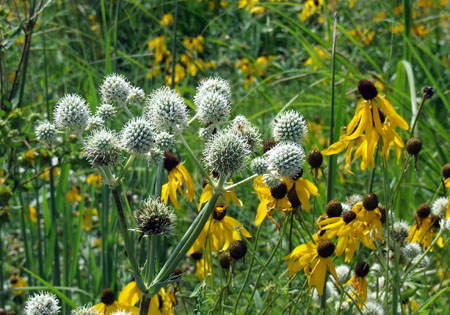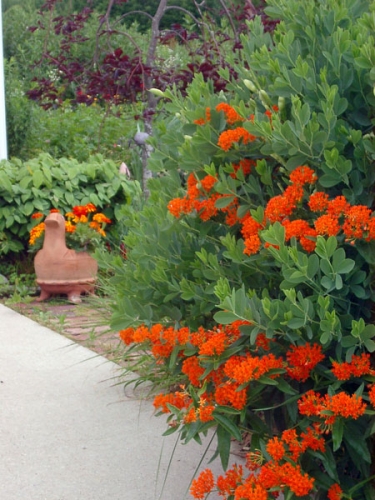Using native wildflowers in the home landscape
Using native wildflowers in the home landscape can add beauty, attract local pollinators and wildlife, and reduce garden inputs.
Going native
A great stir has occurred in recent years around using native wildflowers in our landscapes. When grown under proper conditions, native plants typically experience less environmental, insect, and disease damage than non-native plants. These rugged beauties also create the best environments for local pollinators and wildlife. They tend to be minimally invasive when planted in the right environment.
Sustainability
Native plants have tremendous resilience and are often observed happily growing in a wide range of soil types. Since these plants have existed in our climates for ages, they naturally adapt to “feast or famine” growing conditions that cultivated exotic plants often succumb to. Their adaptability reduces the need for supplemental water (once established) and maintenance, making it easier to maintain plant health with low input.
Blending in
Native wildflowers are not necessarily known for their ornamental beauty in the garden. However, they may surprise you! Try intertwining natives in colorful vignettes within your existing landscape. Rattlesnake master (Eryngium yuccifolium) has a unique thorny appearance, but it makes a handsome addition to perennial gardens and its fragrance is as sweet as honey.

Photo 1. Prairie native rattlesnake master (with greenish-white
flowers) in this mid-summer garden. Photo credit: Rebecca Finneran, MSU Extension
Stately natives like compass plant (Silphium laciniatum) or cup plant (Silphium perfoliatum) are great companions to delicate daylilies or ornamental shrubs. Butterfly weed (Asclepias tuberosa) can add excitement and long-lasting color with its bright orange summer blooms. Additionally, when it’s mixed with false indigo (Baptisia) the bloom season is extended and the combo is a nice substitute for a tidy garden shrub.

Photo 2. Butterfly weed (Asclepias) with its orange
blooms combined with the long-lived false indigo
(Baptisia). Photo credit: Rebecca Finneran, MSU Extension
Right plant, right place
With all the enthusiasm over natives, be sure to take time to select the right plant for your landscape situation. Be wary of blanket statements taken out of context, such as “native plants don’t require maintenance” or “native plants do not need water or fertilizer.” Yes, there is great potential for native plants to tolerate biological and environmental stresses that often characterize the sites in which we expect them to perform. However, soil conditions, sun or shade and exposure must be considered in their proper use. When selecting native plants, choose plants whose natural habitat is similar to conditions in your landscape. For example, select plants native to riparian areas for a wet area of the landscape, or choose dryland plants for your rock garden. With a little research, you should be able to come up with a great list of adaptable plants just right for your own garden.
For information on using native plants to attract beneficial insects visit: http://nativeplants.msu.edu/
Related Source:



 Print
Print Email
Email